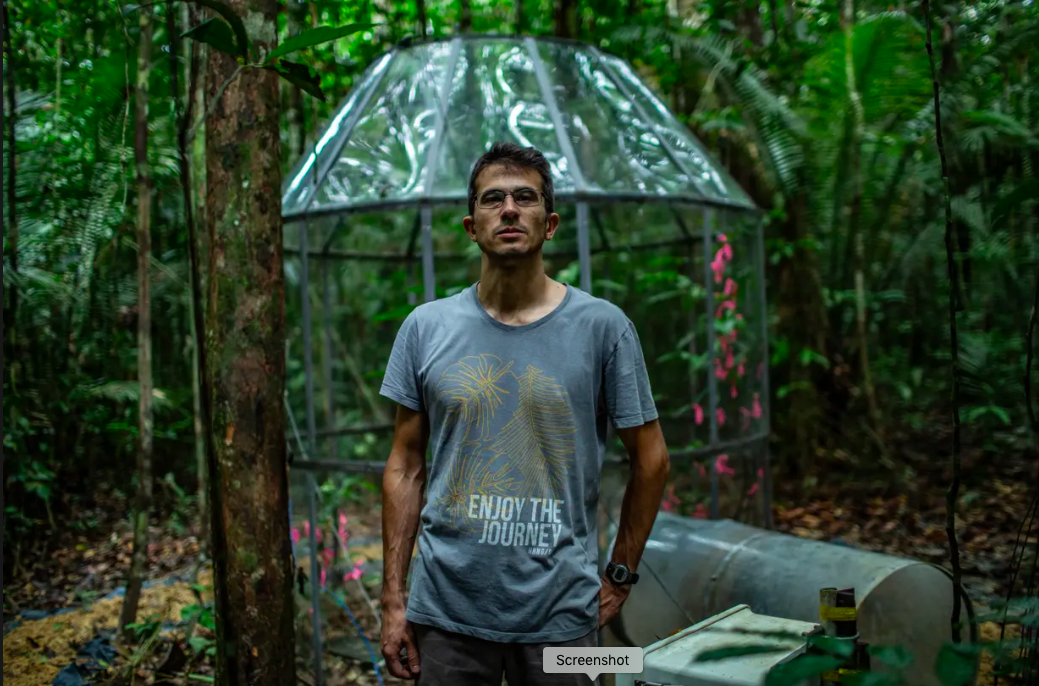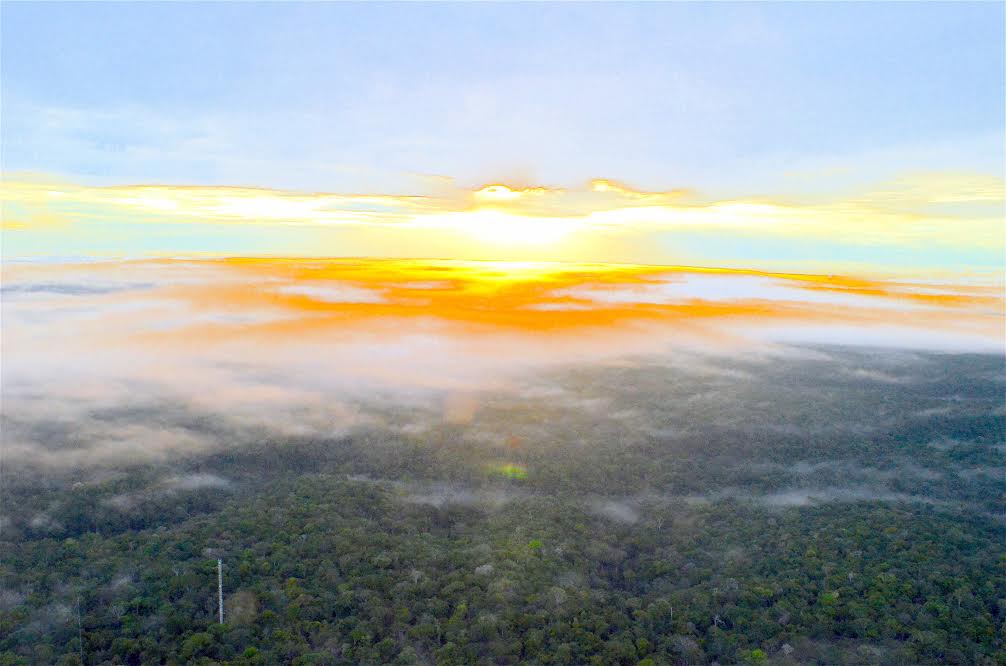
An ambitious experiment deep in the Amazon rainforest aims to find out how the ecosystem is likely to respond to rising levels of carbon dioxide.
In 2000 a research team at the UK's Hadley Centre forecast that a combination of reduced rainfall and higher temperatures caused by global warming could decimate the Amazon by the end of the century. But the following decade another Hadley Centre team concluded that this scenario was unlikely.
The contrary verdict was based largely on the researchers' belief that extra carbon dioxide in the air would protect trees against the increasingly harsh conditions.
The revised prediction did not reassure David Lapola, a Brazilian biologist who is running the new experiment. "Who knows," he said. "Hypotheses are all we have now."
Lapola said nobody had tested the impact of increased carbon dioxide on trees in the Amazon. That is what he and an international team of scientists at a site 35 miles north of Manaus now intend to do.
As Lapola spoke, a pair of construction workers in heavy boots paraded by carrying a large, flat, octagonal aluminium frame. Nearby, several more workers were putting the finishing touches to an open-topped greenhouse made of flexible window panels and more aluminium.
The structure was being put up around several spindly saplings, taking care to avoid trampling the soil. When all of Lapola's chambers have been installed – eight altogether, scattered around an area of jungle twice the size of a football field – computer-controlled nozzles will spray carbon dioxide into four of them, boosting the concentration inside their walls to 50% higher than outside. The other four chambers will be controls and receive no extra CO2.
Unless the growth in CO2 emissions from burning fossil fuels around the world slows down, these raised levels of CO2 in the air will be normal by about 2050.
Scientists have previously exposed saplings and full-grown trees from temperate forests, such as sweet gum and pine trees, to extra CO2. One experiment in the 1990s tested the effect of extra CO2 on the understory trees of a Panama jungle.
The conclusion so far from scores of such experiments on how dozens of species in various places fare in CO2-enhanced air is: it depends.
Since carbon extracted from carbon dioxide is the essential building block of plants, it makes sense that more CO2 in the air should help plants grow better. But sometimes other factors such as lack of critical nutrients prevent plants from taking advantage of extra CO2. Scientists do not yet know enough about how such limiting factors work to predict how a diverse natural forest such as the Amazon will behave in the air of the future.
The question matters not just because the fate of this jungle's assorted flora and fauna could be at stake. The Amazon stores a vast amount of CO2 in its tree trunks which, if the forest declines, will be released into the air, accelerating global warming. That would cause damage all around the world.
Lapola's chamber research will be the first time Amazon trees are tested with extra CO2 in otherwise almost-natural conditions. After it's done, the scientists want to build a larger experiment that bathes a plot as big as a baseball diamond in CO2-enhanced air all the way from the ground to the lofty treetops. This could reveal whether mature trees behave differently to young ones.
The chambers are expected to be ready in late April, at which point the experiment will begin. "I'll probably be here," said Lapola, a professor at the University of Campinas in São Paulo, who estimated he has visited the site 50 times already. "It's hard to stay away."




